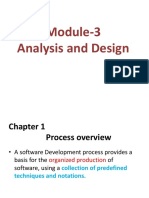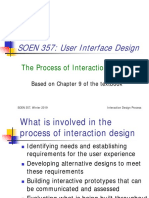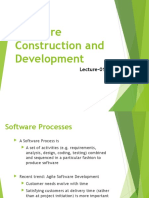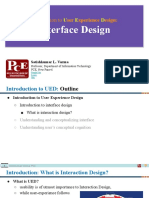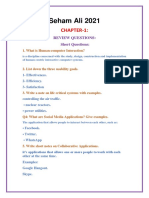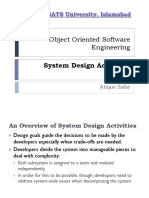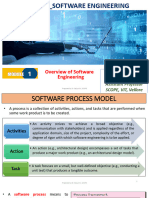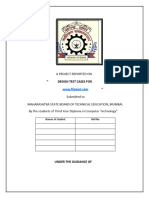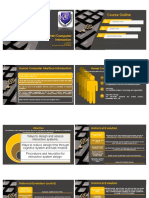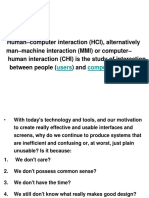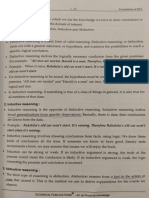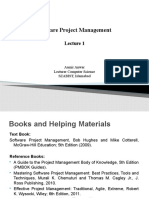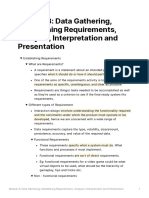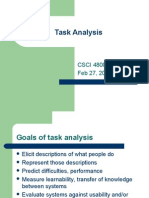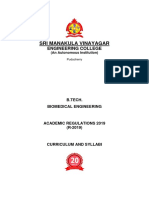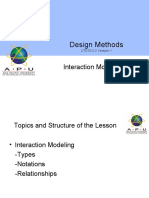0% found this document useful (0 votes)
96 views61 pagesChapter Three: Task Analysis and Interaction Design
The document describes task analysis and interaction design techniques for human-computer interaction. It defines task analysis as the process of analyzing how users complete tasks. Two common task analysis techniques are described: hierarchical task analysis (HTA) which breaks tasks into subtasks, and GOMS models which analyze tasks in terms of goals, operators, methods, and selection rules. The document also provides examples of applying both HTA and GOMS keystroke level modeling to analyze specific tasks.
Uploaded by
ESUBALEW TAMIRUCopyright
© © All Rights Reserved
We take content rights seriously. If you suspect this is your content, claim it here.
Available Formats
Download as PDF, TXT or read online on Scribd
0% found this document useful (0 votes)
96 views61 pagesChapter Three: Task Analysis and Interaction Design
The document describes task analysis and interaction design techniques for human-computer interaction. It defines task analysis as the process of analyzing how users complete tasks. Two common task analysis techniques are described: hierarchical task analysis (HTA) which breaks tasks into subtasks, and GOMS models which analyze tasks in terms of goals, operators, methods, and selection rules. The document also provides examples of applying both HTA and GOMS keystroke level modeling to analyze specific tasks.
Uploaded by
ESUBALEW TAMIRUCopyright
© © All Rights Reserved
We take content rights seriously. If you suspect this is your content, claim it here.
Available Formats
Download as PDF, TXT or read online on Scribd
/ 61




